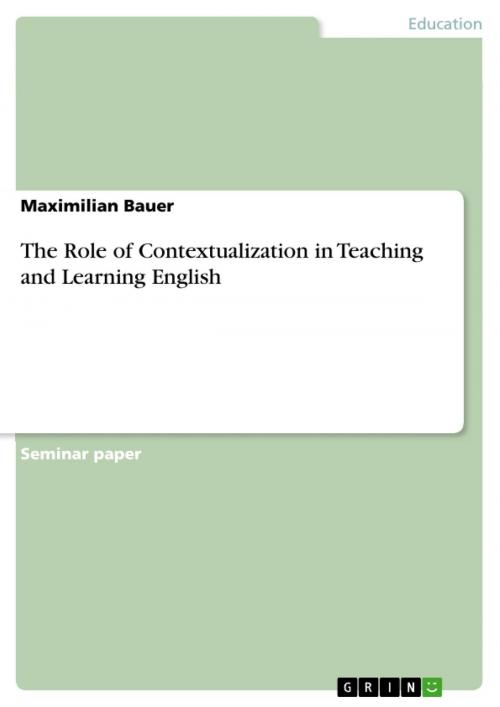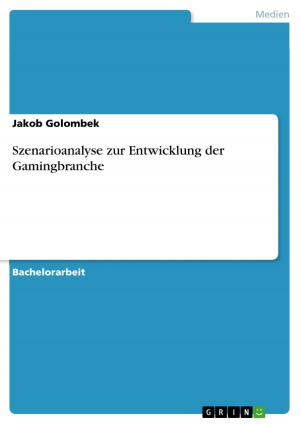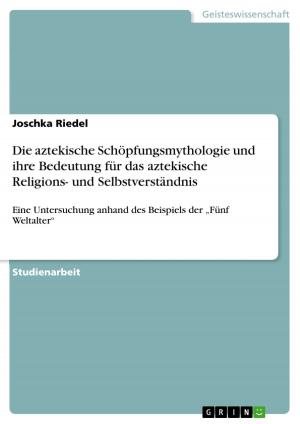The Role of Contextualization in Teaching and Learning English
Nonfiction, Reference & Language, Study Aids, ESL, Foreign Languages| Author: | Maximilian Bauer | ISBN: | 9783668119987 |
| Publisher: | GRIN Verlag | Publication: | January 5, 2016 |
| Imprint: | GRIN Verlag | Language: | English |
| Author: | Maximilian Bauer |
| ISBN: | 9783668119987 |
| Publisher: | GRIN Verlag |
| Publication: | January 5, 2016 |
| Imprint: | GRIN Verlag |
| Language: | English |
Seminar paper from the year 2014 in the subject English - Pedagogy, Didactics, Literature Studies, grade: 2,0, University of Würzburg (Neuphilologisches Institut), course: Linguistics and Teaching English, language: English, abstract: In this work it will be shown what exactly is meant with the term 'contextualization' and what its meanings for language learning and teaching are. A definition of context and contextualization will be the start of this paper. An overview of methods using the ideas of contextualization will follow and the last topic will be the advantages and disadvantages as well as the critics that formed against this movement of language teaching and learning. The paper will close with a short overview about current usage of contextualization in foreign language classrooms, as it is used to a large extend in schools and other institutions as for example the Volkshochschule. Teaching methods differ widely, mostly concerning to what their approach on teaching and learning is and how it is pursued. Methods coming up in the 1970s stated that learning should happen in context, as contextualization is of major importance, when learning a language. This was seen as important in several approaches to learning foreign languages as for example the task based learning approach (TBL) or content and language integrated learning approach (CLIL). This development was a consequence of new research in the field of language acquisition. Beforehand behavioristic approaches and the views they stood for were most important for the developing of teaching and learning models, but as cognitivist views took over contextualization got more and more influential on the matter.
Seminar paper from the year 2014 in the subject English - Pedagogy, Didactics, Literature Studies, grade: 2,0, University of Würzburg (Neuphilologisches Institut), course: Linguistics and Teaching English, language: English, abstract: In this work it will be shown what exactly is meant with the term 'contextualization' and what its meanings for language learning and teaching are. A definition of context and contextualization will be the start of this paper. An overview of methods using the ideas of contextualization will follow and the last topic will be the advantages and disadvantages as well as the critics that formed against this movement of language teaching and learning. The paper will close with a short overview about current usage of contextualization in foreign language classrooms, as it is used to a large extend in schools and other institutions as for example the Volkshochschule. Teaching methods differ widely, mostly concerning to what their approach on teaching and learning is and how it is pursued. Methods coming up in the 1970s stated that learning should happen in context, as contextualization is of major importance, when learning a language. This was seen as important in several approaches to learning foreign languages as for example the task based learning approach (TBL) or content and language integrated learning approach (CLIL). This development was a consequence of new research in the field of language acquisition. Beforehand behavioristic approaches and the views they stood for were most important for the developing of teaching and learning models, but as cognitivist views took over contextualization got more and more influential on the matter.















